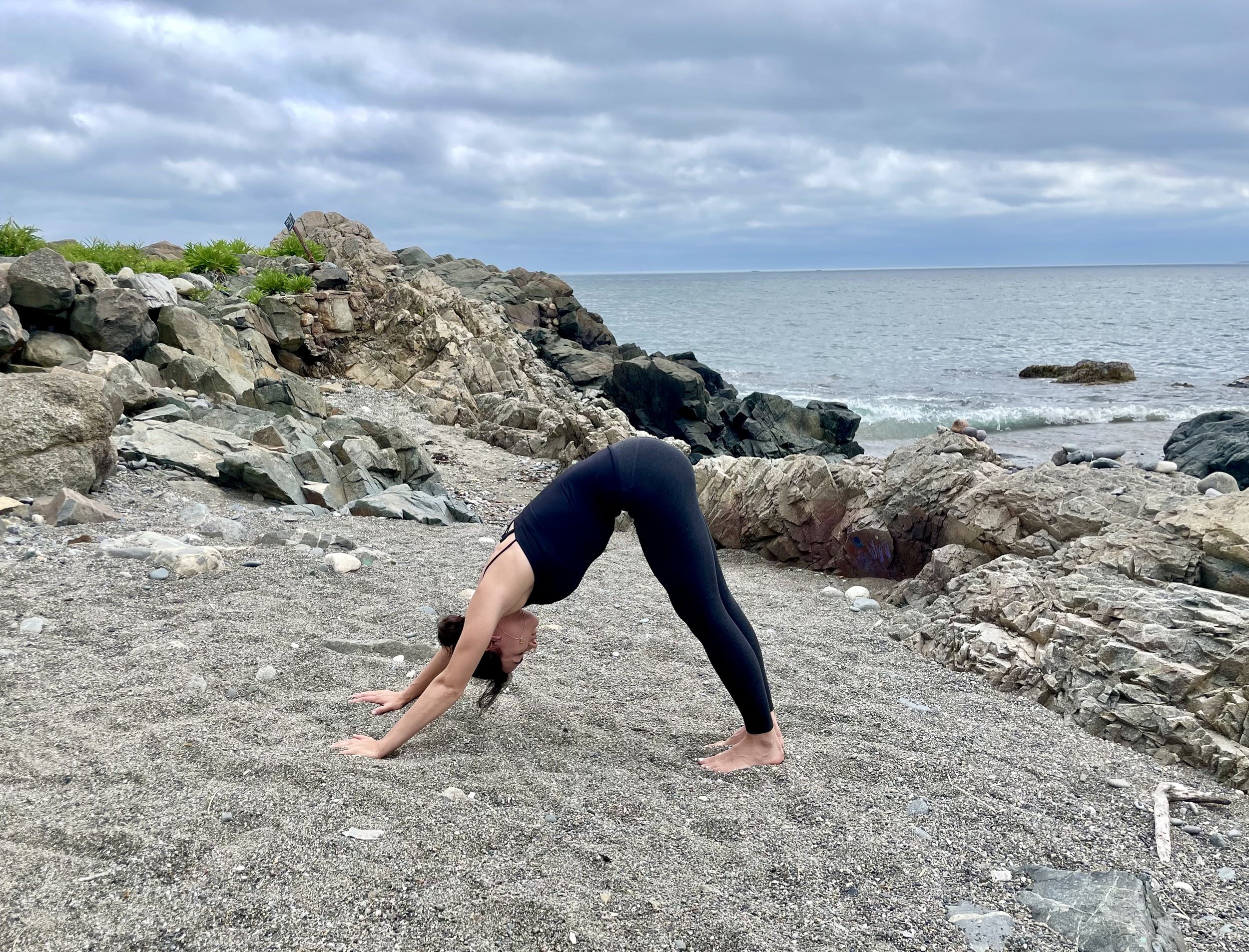Three Yoga Poses for Summer
During the heat of summer the fire and water elements are the most prominent igniting growth. The warmer climate can lead to the body overheating more easily. This is a time to practice cooling poses that help the body release heat. These three postures will help you feel cooler and relaxed.
Adho Mukha Svanasana (Downward Facing Dog)
Start in a table top position with hands under shoulders and knees under hips.
Walk your hands a few inches forward.
With feet hip distance apart, tuck your toes, lift your knees and start to straighten your arms and legs.
Create a soft bend in the knees and send your belly back to your thighs. Press firmly into your hands.
Gaze between the knees to release the head.
Bend and straighten the knees a few times
Hold for 10 breaths, then walk your hands to your feet and slowly roll up to stand.
Benefits: This pose lengthens the spine and muscles in the legs. It is helpful for circulation and has a cooling effect on the body.
Uttanasana (Forward Bend) - this could be standing or seated
Stand up straight with feet hips distance apart and arms at your side.
Inhale and reach your arms to the sky.
Exhale as you bend the knees and slowly fold over your legs.
Arms can reach to the earth or grab opposite elbows as show.
Gaze towards your belly to relax the neck.
Bend and straighten the legs a few times.
Hold in stillness for 10 breaths.
Slowly roll up to stand.
Benefits: This pose lengthens the legs and spine and compresses the core where excess heat can become trapped.
Viparita Karani (Legs up)
Laying on the floor or in bed, bring your legs up to the sky.
Bend your knees as much as you need.
To make this more relaxing, sit close to a wall and allow your legs to rest agains the wall.
Tuck your chin a little to avoid arching your neck.
Breath naturally and relax for 1-2 minutes (or longer).
To come down, slowly bend your knees and return your feet to the earth.
Benefits: This is a cooling inversion and should feel relaxing to the body and mind. Note: this pose can create some stimulation in the core if the legs are not supported by a wall.



